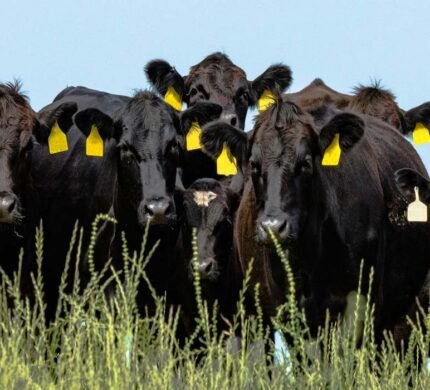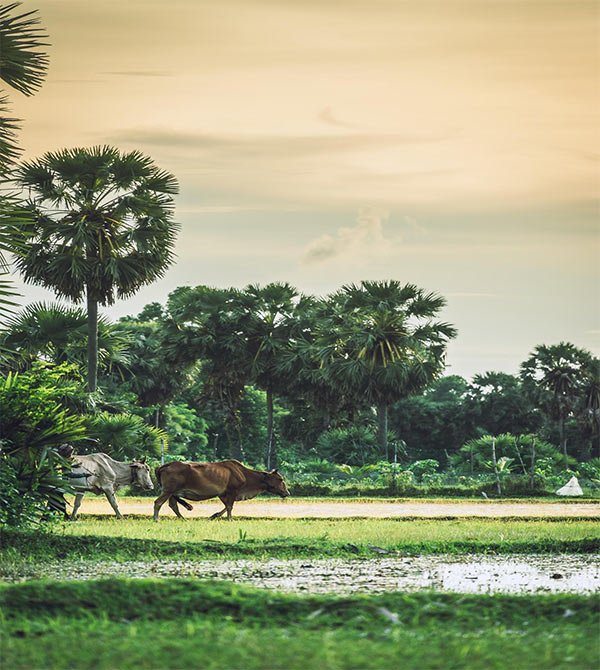Aberdeen Angus
- Temperature:38.0°C to 39.7°C
- Milk:Not raised for milk production
- Food:Steak, Burgers, Roasts and Beef jerky
- Pregnancy:Approximately 9 months
- Nationality:North-eastern Scotland

General Information
Aberdeen Angus is a breed of cattle that originated in Scotland in the early 1800s. They are known for their black coloration, which is a result of a dominant gene that is passed down from generation to generation.
Aberdeen Angus cattle are highly valued for their meat quality, as the breed is known for producing tender, well-marbled beef. They are also known for their hardiness and adaptability, as they are able to thrive in a variety of climates and environments.
Aberdeen Angus cattle are popular around the world, and the breed is now found in many countries, including the United States, Canada, and Australia. They are often raised for beef production and are also used in breeding programs to improve the meat quality of other breeds.
The breed has a distinctive appearance, with a compact, muscular build and a short, broad head. They typically weigh between 1,000 and 1,500 pounds and stand around 4 to 5 feet tall at the shoulder. Aberdeen Angus cows are known for their maternal instincts and are often used as mothers for crossbred calves.
Where we find this cow to buy?
If you’re looking to buy Aberdeen Angus cows, there are a few places you can start your search:
01. Local Farms: You can search for local farms in your area that raise Aberdeen Angus cows. A good place to start would be to check out online directories of local farms or farmer's markets in your area.02. Livestock Auctions: The other option is to attend livestock auctions where you can purchase Aberdeen Angus cows from breeders who sell them at a reduced price.03. Online Marketplaces: There are also online marketplaces that specialize in livestock sales, such as Cattle USA or Cattle Range, where you may be able to find Aberdeen Angus cows for sale.04. Breed Associations: There are a few associations around the world that maintain breeder directories. Start your search by contacting your local Aberdeen Angus association.
It’s important to do your research and due diligence before making any purchases, and make sure to choose a reputable and trustworthy breeder or seller.

How to increase milk production in Aberdeen Angus?
Aberdeen Angus is a breed of beef cattle, so they are not typically used for milk production. However, if you have a particular Aberdeen Angus cow that you are trying to increase milk production for, here are some general tips that may help:
01
Ensure Adequate NutritionAdequate nutrition is essential for milk production, so make sure the cow has access to high-quality forage and a balanced diet that meets her energy, protein, and mineral requirements.
02
Monitor The Intake of WaterKeep your cows supplied with clean water, so they can produce milk. Regular milking is important for maintaining milk production. Ensure that you milk the cow every day at the same time and completely.
03
Use Proper Milking TechniqueMake sure you are using proper milking techniques to avoid injury or discomfort to the cow, which can affect milk production. Use clean and well-maintained equipment.
04
Consider Using SupplementsSome supplements may help support milk production in cows. Consult with a veterinarian or livestock nutritionist to determine if a supplement could be beneficial for your cow.
Medicine
Aberdeen Angus cows, like all livestock, are prone to various diseases and health problems, some of which may require medical treatment. Some common health issues that may affect Aberdeen Angus cows include:
All cattle, including Aberdeen Angus cows, can get this disease. Coughing, fever, and difficulty breathing can result from a combination of bacterial and viral infections. Supportive care may include antibiotics.
Aberdeen Angus cows can be affected by this viral disease. Symptoms include fever, diarrhea, and respiratory problems. Treatment may include supportive care and antiviral medication.
This is an inflammation of the udder, typically caused by bacterial infection. It can result in pain, swelling, and reduced milk production. Treatment may include antibiotics and other supportive care.
This is a bacterial infection that can affect the feet of cattle, including Aberdeen Angus cows. It can result in lameness and pain. Treatment may include antibiotics and other supportive care.

- Aberdeen Angus is a breed of cattle known for its high-quality meat. If you're asking about Aberdeen Angus pregnancy, it's likely you're wondering about how to tell if a female Aberdeen Angus cow is pregnant.
- Another method of determining pregnancy in cows is through an ultrasound. This is a non-invasive way of determining pregnancy, but it can be more expensive than palpation.
- Like all cows, Aberdeen Angus cows are pregnant for approximately 9 months. In order to determine if a cow is pregnant, it is common to "palpate" its uterus to feel for developing calves. This process is usually done by a veterinarian or trained professional.
Important!
It’s important to note that if you’re looking to breed Aberdeen Angus cows, it’s essential to work with a reputable breeder and to follow proper breeding protocols. Additionally, proper nutrition, health care, and management practices are critical to ensuring a successful pregnancy and healthy calf.
Some signs that a cow may be pregnant include a lack of heat cycles, a larger and more rounded abdomen, and a thickening of the uterus wall.
Food
Aberdeen Angus cattle, like all cattle, are herbivores that primarily feed on grass and hay. Providing a well-balanced diet is important for the health and productivity of the animals. Here are some foods that can be included in a typical diet for Aberdeen Angus cattle:
Providing access to fresh pasture grass is an important part of a balanced diet for Aberdeen Angus cattle. They are grazing animals and require adequate amounts of grass to meet their nutritional needs.
Hay is a good source of roughage for cattle and can be used to supplement pasture grass during times when grass is scarce or during the winter months.
Silage is fermented forage that is often made from grass or corn. It can provide a good source of energy and nutrients for cattle.
Cattle can be fed small amounts of grains, such as corn or oats, to provide additional energy and nutrients.
Facts
Aberdeen Angus is a breed of cattle that originated in Scotland, and is now one of the most popular breeds in the world. Here are some interesting facts about the breed:
Aberdeen Angus cattle are known for their black, smooth, and glossy coats. They are also sometimes called “Black Angus” in the United States.
The breed was developed in the early 19th century in the counties of Aberdeen and Angus in Scotland, where it was primarily used for beef production.
The breed has been selectively bred for many generations to maintain its desirable traits, including its meat quality, hardiness, and docility.
Aberdeen Angus has two main strains: the Scottish strain, which is the original type, and the American strain, which was developed in the United States.
Aberdeen Angus cattle are known for their excellent meat quality, which is well-marbled, tender, and flavorful.
Breeds of this breed are highly suited for a wide range of climates and environments all over the world.
Aberdeen Angus cattle are relatively small and compact, with a muscular build and a gentle temperament.
The breed has a strong presence in the show ring, and is highly prized for its beauty, as well as its meat quality.